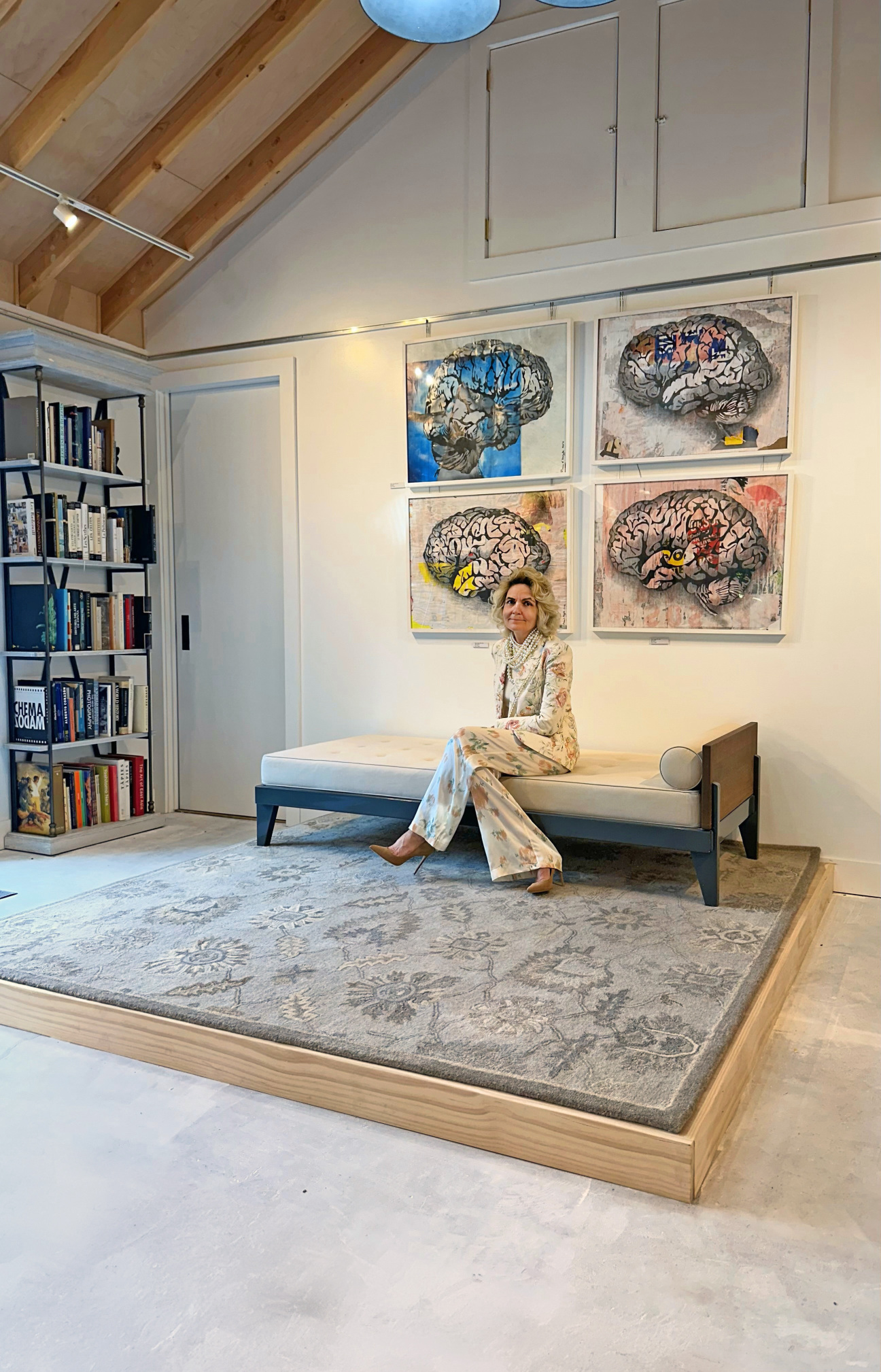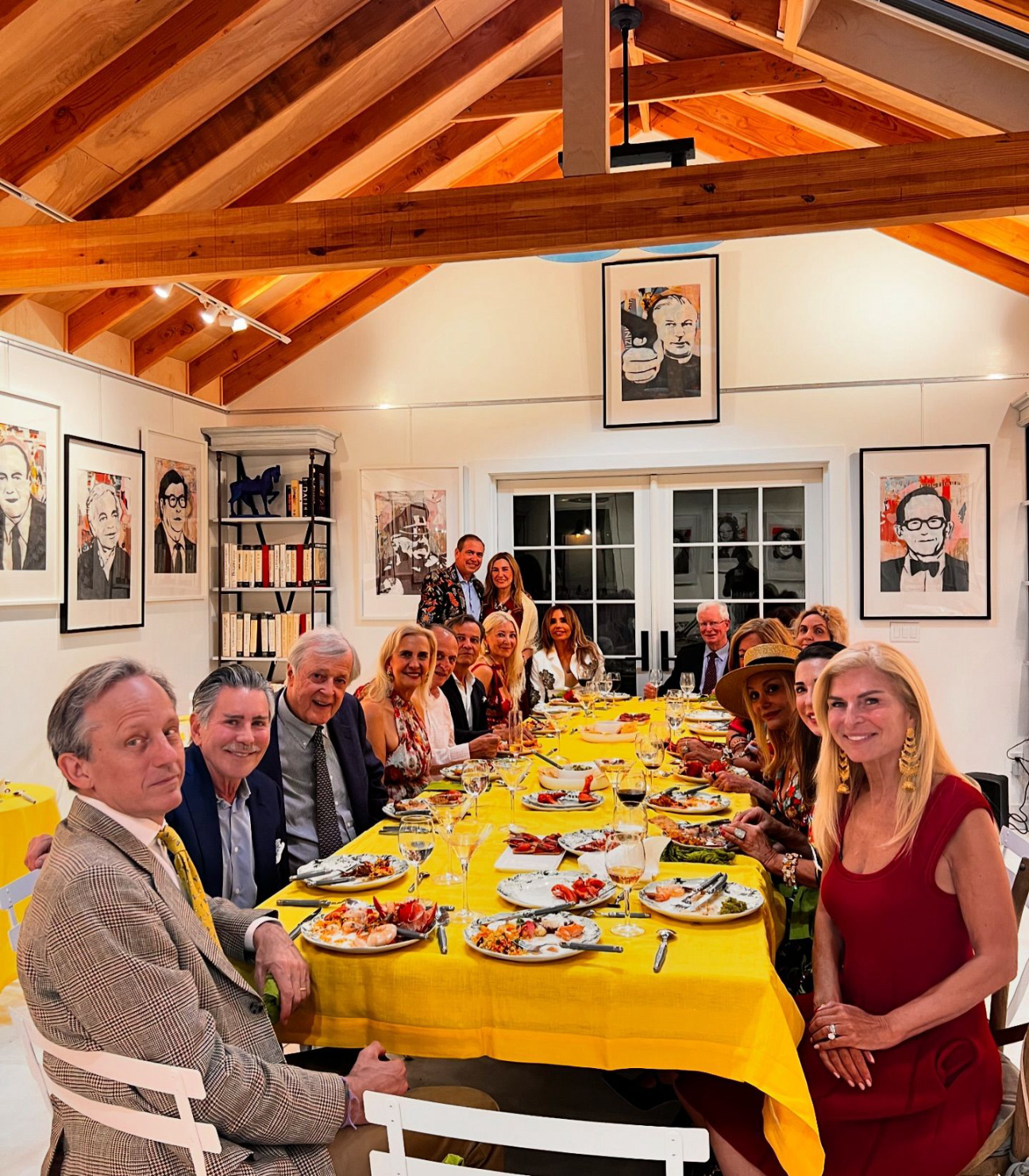
Curator, advisor, and Baruch College professor Mar Morosse has spent much of her life interrogating art. Having worked with such illustrious international institutions as the Louvre, the Musée d’Orsay, the Spanish Royal Trust, and Sotheby’s—and earned PhDs in both Madrid and Paris—Morosse has since earned a reputation on the East End for her home salons, which present a tantalizing mix of dinner party and gallery opening.
This summer, Morosse’s home will play host to works by Pierre d’Argyll and Bernardi Roig. In a dispatch from Southampton—where Morosse and her husband, William Morosse, spend the season—the doyenne of art out East shares her thoughts on the local scene, the first piece she ever bought, and how to curate the perfect summer evening (hint: lots of paella and flamenco).
What do you think makes the Hamptons art scene distinct?
There’s a rich history of painters who have lived and developed their art in this area. Institutions like the Parrish Art Museum, the Pollock-Krasner House, and Guild Hall are testaments to a long tradition that includes both international and local art. The Hamptons are fertile ground for creativity, offering immense potential and abundant artistic results.
What is the first piece you ever bought?
The first piece I ever bought was a drawing at a sale—I recognized it was a Degas. I tend to work with artists I admire, and that’s a key way I build my collection. Occasionally, I delve into auctions when I see a fantastic opportunity. As my husband, a former bond trader, always says, “Buy what’s cheap and sell what’s rich.”
Which artist are you currently most excited about and why?
This summer we are excited to feature two remarkable artists at the salon. The first is Pierre d’Argyll, a French artist based in Madrid, who will be presenting a series of “Society Portraits.” These portraits will depict various figures from the life of the Hamptons. D’Argyll brings a fresh perspective, unconnected to the local context, and his extraordinary use of collages made from recycled mixed-media paper creates a unique beauty.
The second is Bernardi Roig, an exceptional artist whose work has been on display at the Phillips Collection in Washington, DC, since April. He is showcasing a series of 55 drawings about the lost head of Francisco José de Goya. The story behind Goya’s missing skull is well-known: He was buried in the Chartreuse cemetery in Bordeaux in 1928, and the Spanish consul proposed repatriating his body in 1898. Upon opening the tomb, they discovered Goya’s body was missing its head, likely taken for scientific study. The Spanish government’s response was pragmatic: “Send Goya, with or without head.”
Roig’s work, inspired by this eerie piece of history, has been acquired by the Phillips Collection. Here in the Hamptons, he will be creating something that connects with the space and his Spanish heritage. This blend of historical intrigue and artistic brilliance makes both artists’ contributions highly anticipated.

How has the local art scene influenced your collection?
It has heightened my awareness of the relationship between art and the market. Being in the center of the art world, the East End holds significance as a recreational retreat for Manhattanites. I appreciate this attitude, as I believe art should be a source of enjoyment and pleasure.
Does your work as an art history professor impact how you look at potential acquisitions?
It influences me profoundly. My life has been dedicated to reading, studying, and writing about art. This deep immersion allows me to see potential acquisitions through a rich and informed perspective. In many ways, I breathe art.
Can you tell us about the salons you host at home?
I aim to promote intellectual conversations about art and its impact on society. Another aspect of the salon is to create enjoyable experiences, such as hosting large dinner parties with good wine and food—incorporating live music, shows, and short artist talks. One of our favorite summer events is a paella and flamenco evening, but we also explore various themes like landscapes and romantic chamber music, classical guitar, and Renaissance drawings. These gatherings offer a unique blend of cultural enrichment and social enjoyment.
What was your biggest influence in fostering your passion for art?
My father. Although he was a physician by training, he was also an insightful intellectual and a talented artist. Our family life revolved around intellectual discussions rather than watching TV, and we often had extensive conversations about art and history. Later, I went to Paris to study art history, where I met Yves Bonnefoy. His insights profoundly shaped my understanding of art history. Both my father and Bonnefoy have significantly influenced my work and my love of art.
What feelings would you like your collection to inspire in the people who experience it?
I would like it to inspire a sense of beauty and happiness in those who experience it. Art is a profound way to navigate life’s journey, and my hope is that an art collection provides a sense of joy, inspiration, and a deeper appreciation for the beauty that surrounds us.










 in your life?
in your life?

